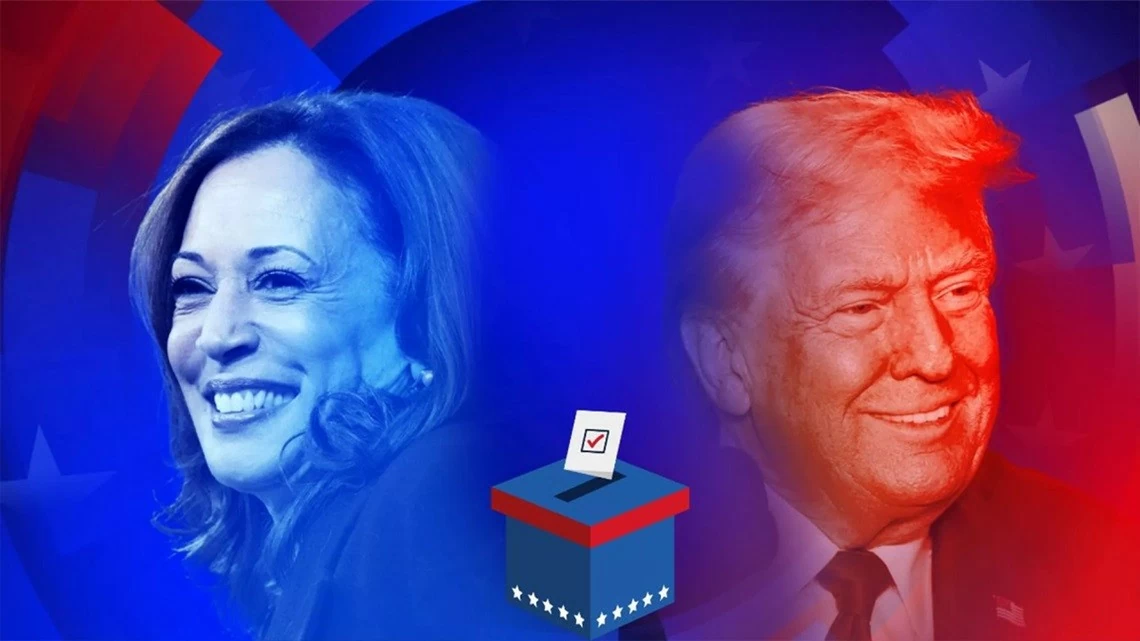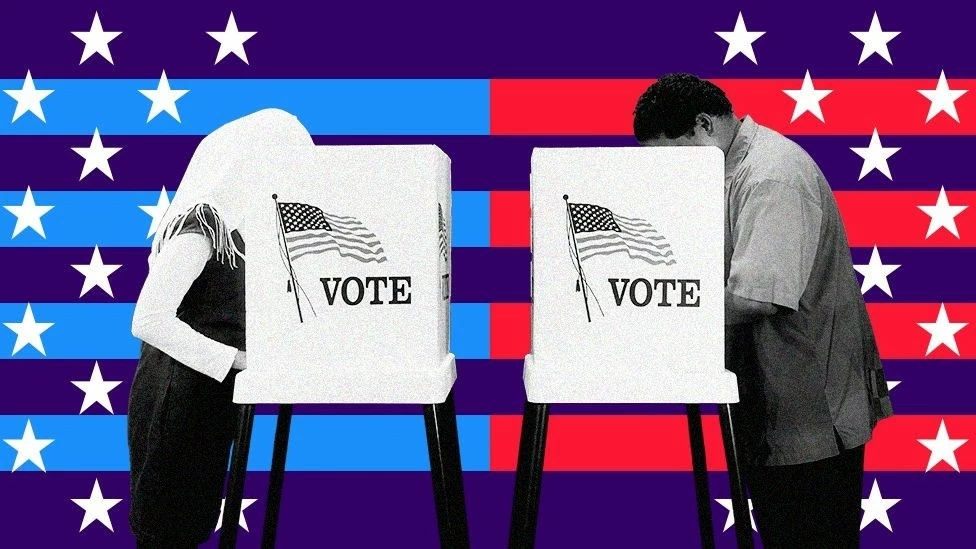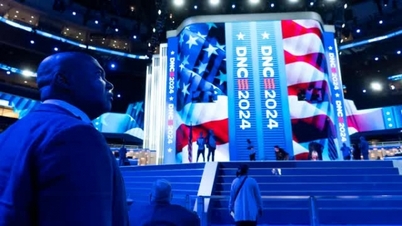Why do US elections take place on the first Tuesday of November, why does a candidate who wins the popular vote not guarantee that he or she will win the presidency, what does "the winner takes it all" mean...?
 |
| American voters will go to the polls to choose one of two candidates to become the 47th President of the United States. (Source: AP) |
In just a few days, American voters will go to the polls to choose one of two candidates to become the 47th President of the United States. The election story is a hot topic not only in the media, but also in everyday life, and is of interest to not only the American people but also people around the world. Simply because America is so big and so powerful, whoever or whichever party holds power in America will have an impact not only on the lives and wallets of the American people, but also on peace, stability and economic development in the world, at least for the next 4 years.
Although Election Day has not officially arrived, at least 50 million voters have already cast their ballots (about 20% of the total electorate) through early voting or mail-in ballots. Why is the election held on the first Tuesday in November, why does winning the popular vote not guarantee that the candidate will win the presidency, what is “the winner takes it all”…?
First Tuesday in November, why?
Tuesday, November 5, 2024, is the day of the Presidential election in the United States. In this country, the Presidential election takes place every 4 years. In between the 2 Presidential elections and in even-numbered years, the United States has mid-term elections. In other words, every 2 years and in even-numbered years, the whole United States is bustling into "Election Season".
According to US law, election day is set on the B day, but must be after the first Monday in November (if Tuesday falls on November 1, it is not counted). Accordingly, the earliest election day must be November 2 and the latest is November 8.
In fact, the law that stipulates a unified national election on a Tuesday in November as mentioned above was passed by the US Congress in 1845. Before that, the Old Law (passed in 1792) stipulated that states, depending on their conditions, could flexibly organize the vote within a period of 34 days before December 1. There are many explanations for why the US Congress chose to hold a unified vote on Tuesday as mentioned above:
One is that the time is within the 34-day period of the old law, and if a joint election day is held, it will create a “fair” playing field, minimizing the possibility that a presidential candidate wins in some of the earliest voting states, only to gain an advantage in other states that vote later;
Second , early November is not too cold and farmers have just finished their harvest season (at this time America is an agricultural country and people mainly live off farming);
Third , if it is held on Wednesday of the week, it is not convenient because in many places farmers choose Wednesday as market day;
Fourth , moving election day to the weekend falls on a religious holiday.
 |
| Although the official election day has not yet arrived, at least 50 million voters have already cast their ballots. (Source: BBC) |
A very long list
A presidential election year like 2024 is fundamentally different from a midterm election year in that there are additional votes for President and Vice President, while the list of candidates for other positions remains basically the same. On presidential or midterm election day, voters across the United States elect a very long list, with some key seats including:
1/3 of the total number of federal Senators (33 or 34 out of 100 Senators because the term of office of Senators is 6 years, but every 2-year election, 1/3 should be re-elected to maintain continuity);
All 435 federal Representatives and 6 senators (who do not have a vote on “decisive” matters) represent the capital Washington DC and 5 unincorporated territories (including Guam, Puerto Rico, American Samoa, Northern Mariana, Virgin Islands);
Some state governors (4-year terms), most of whom (about 2/3 of the 50 governors) are elected in midterm elections. Only two states, Vermont and New Hampshire, are different from the other 48 states, electing a governor every 2 years because the governor here only serves a 2-year term;
State legislatures (also organized into two houses - Bicameral Body - are the State Senate and the State House of Representatives, however the number of members in each state is different). Notably, only Nebraska out of the 50 states has a state legislature organized in the form of "Unicameral Body";
Mayor, City Council, Town Council…
“The winner takes it all”
It can be said that the system of organizing the federal and state governments and the way to elect officials to hold these positions in the United States is one of the most complex and sophisticated systems in the world because it must take into account the balance of many factors.
First , the principle of equality between states. The negotiation process to form the United States of America, which initially had only 13 states (in fact, 13 separate countries), was a bargaining and compromise. They compromised on the Federal Senate, agreeing that this was the most important legislative institution, deciding important issues of the country and in which large and small states were equally represented by 2 Senators. For example, Delaware had only 1 million people, but also had 2 Senators like the most populous state, California, with 40 million people.
Second , the principle of universal suffrage and equality for all. The total number of 435 US Congressmen remains unchanged, but the population of the states can change every year due to economic development, changes in the environment, education and the need for people to move to find jobs and new settlements.
Therefore, every 10 years, in the even-numbered years at the beginning of each decade (for example, 1990, 2000, 2010, 2020), the United States conducts a national census with many questions for different purposes. Based on the population map that changes after a decade, the electoral "map" is also redrawn according to population changes and the number of congressmen in each state can increase or decrease depending on the number of residents in a state at the time of the census. States with large and rapidly growing populations and therefore also have a large number of representatives in the House of Representatives are California, Texas, Florida.
Third , “The winner takes all”. Because of the federal form of government, although the American people are said to directly elect the President, they do not vote directly, but indirectly according to the total number of seats that the states have representatives in the Federal Congress, including 100 votes representing Senators, 435 votes representing Representatives, and 3 electoral votes from the capital Washington DC, with a total of 538 electoral votes. And the elected President must win at least 270 electoral votes, which is more than half of the 538 electoral votes.
Quality over quantity
If a presidential candidate wins a state, he or she is considered to receive the electoral votes of that entire state. From here, the following cases occur:
First , a candidate winning more states does not necessarily guarantee victory;
Second , the candidate who receives more votes from voters does not necessarily win (ie, wins the popular vote but still loses, as in the case of Vice President Al Gore winning the popular vote against Texas Governor George Bush in the US in the November 2000 Presidential election, but lost in the important state of Florida and therefore lost the Electoral College);
 |
US presidential candidates have to go through a long and difficult road to become the owner of the White House for 4 years. (Source: Wikimedia, NLD) |
Or like in the 2016 Presidential election, Democratic presidential candidate Hilary Clinton won the popular vote, but still lost to candidate Donald Trump in the Electoral College;
Third, it is important for any presidential candidate to find a way to win in populous states with many electoral votes. Because some states in the US have a tradition of voting for the Republicans (such as Texas, Georgia), and some states have a tradition of voting for the Democrats (such as California, New York), and because up to 80% of voters have “Republican blood” or “Democratic blood” running through their bodies, regardless of how good or bad their party’s candidate is, they are always “loyal” to the ideals they have chosen and vote for “their party”.
Therefore, elections in the US are actually aimed at “Swing states” or “Swing voters” or independent, undecided voters.
Progressive democratic development
The electoral process in the US is also a gradual democratic development, not a situation where Americans suddenly “enjoy” all the rights to vote and run for office as they do today. The argument of the American elite since the founding of the country is that political rights will be expanded along with the economic and social progress of the voting groups and of the US, specifically:
From the late 18th century until the early 20th century (1920), American women (as well as women in most other countries) did not have the right to vote to choose their representatives.
Before the 20th century, many states stipulated that only Caucasian men, with a certain level of education (after primary school), property (most states stipulated 50 acres of land or more), or income tax could vote. The argument of the legislators at that time was that if illiterate or poorly educated voters voted, they would not be able to recognize right from wrong and would be “voted”, ruining the political system. In addition, paying taxes was defined as a standard because if you do not pay taxes, it means you have no contribution, no obligation to the country, so you cannot have the “right” and “ability” to contribute to the improvement of the system.
Slaves were strictly forbidden to vote because they were illiterate and had no income. However, after the Civil War of April 1861-May 1865, attitudes toward blacks in some southern states became more open, although discrimination against blacks in the South remained strong.
In February 1870, Hiram Rhodes Revels became the first black senator elected to represent the southern state of Mississippi in the United States Senate. Barack Obama, President of the United States from 2009 to 2016, is only the 5th black senator (the current number is 10) in the history of the United States since its founding in 1776.
However, it was not until August 6, 1965, when US President Lyndon Johnson signed the Voting Rights Act, which absolutely prohibited the blocking and creation of barriers to hinder the voting of ethnic minorities, that from then on, ethnic minorities were able to enjoy the same voting rights as white people.
It is called "voting" but in reality, Americans "press the button" to choose their representative. This was "legislated" after the controversial election results between presidential candidate Al Gore and candidate George Bush in the controversial presidential election in November 2000.
Source: https://baoquocte.vn/nhung-thong-le-lam-nen-thuong-hieu-bau-cu-my-292305.html













































































































Comment (0)